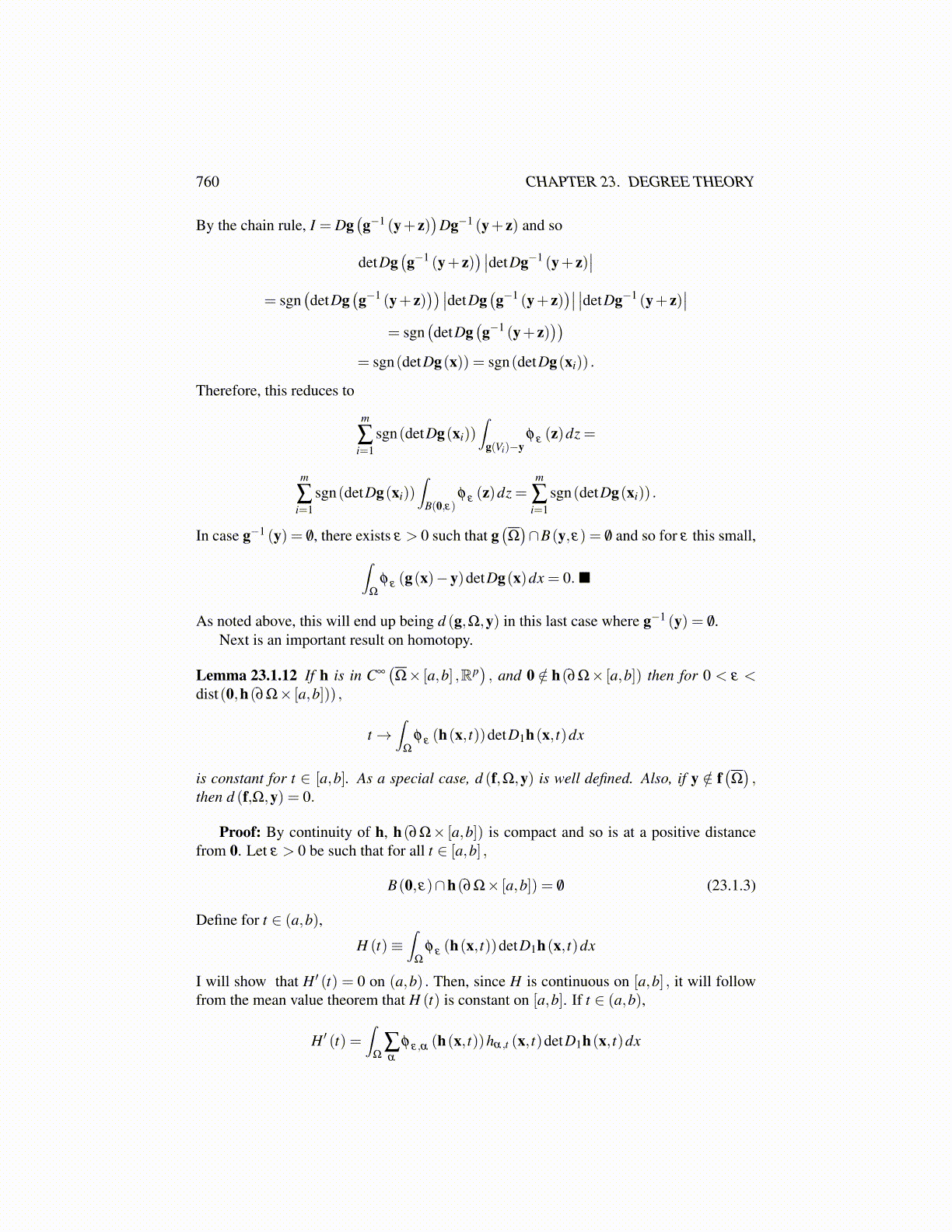
760 CHAPTER 23. DEGREE THEORY
By the chain rule, I = Dg(g−1 (y+ z)
)Dg−1 (y+ z) and so
detDg(g−1 (y+ z)
)∣∣detDg−1 (y+ z)∣∣
= sgn(detDg
(g−1 (y+ z)
))∣∣detDg(g−1 (y+ z)
)∣∣ ∣∣detDg−1 (y+ z)∣∣
= sgn(detDg
(g−1 (y+ z)
))= sgn(detDg(x)) = sgn(detDg(xi)) .
Therefore, this reduces to
m
∑i=1
sgn(detDg(xi))∫
g(Vi)−yφ ε (z)dz =
m
∑i=1
sgn(detDg(xi))∫
B(0,ε)φ ε (z)dz =
m
∑i=1
sgn(detDg(xi)) .
In case g−1 (y) = /0, there exists ε > 0 such that g(Ω)∩B(y,ε) = /0 and so for ε this small,∫
Ω
φ ε (g(x)−y)detDg(x)dx = 0.
As noted above, this will end up being d (g,Ω,y) in this last case where g−1 (y) = /0.Next is an important result on homotopy.
Lemma 23.1.12 If h is in C∞(Ω× [a,b] ,Rp
), and 0 /∈ h(∂Ω× [a,b]) then for 0 < ε <
dist(0,h(∂Ω× [a,b])) ,
t→∫
Ω
φ ε (h(x, t))detD1h(x, t)dx
is constant for t ∈ [a,b]. As a special case, d (f,Ω,y) is well defined. Also, if y /∈ f(Ω),
then d (f,Ω,y) = 0.
Proof: By continuity of h, h(∂Ω× [a,b]) is compact and so is at a positive distancefrom 0. Let ε > 0 be such that for all t ∈ [a,b] ,
B(0,ε)∩h(∂Ω× [a,b]) = /0 (23.1.3)
Define for t ∈ (a,b),
H (t)≡∫
Ω
φ ε (h(x, t))detD1h(x, t)dx
I will show that H ′ (t) = 0 on (a,b) . Then, since H is continuous on [a,b] , it will followfrom the mean value theorem that H (t) is constant on [a,b]. If t ∈ (a,b),
H ′ (t) =∫
Ω∑α
φ ε,α (h(x, t))hα,t (x, t)detD1h(x, t)dx